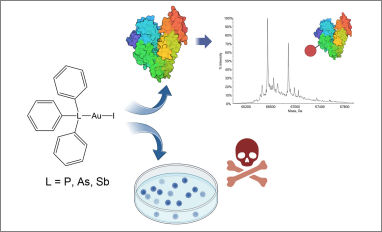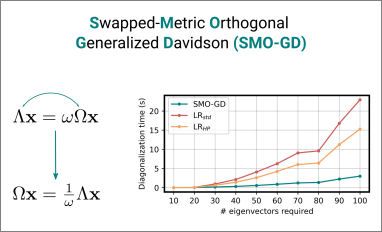
 Congratulations to our Ph.D. student Marco Rollo for his publication entitled "Preparation and Characterization of Zinc(II)-Based Lewis/Brønsted Acidic Deep Eutectic Solvents”. Four different zinc(II)-based LBDESs have been prepared mixing ZnCl2 and various Brønsted acids: acetic, glycolic, levulinic, and formic acids. Apart from the latter, for which the corresponding DES is not thermally stable, the samples have been characterized in terms of density, viscosity, and conductivity.
Congratulations to our Ph.D. student Marco Rollo for his publication entitled "Preparation and Characterization of Zinc(II)-Based Lewis/Brønsted Acidic Deep Eutectic Solvents”. Four different zinc(II)-based LBDESs have been prepared mixing ZnCl2 and various Brønsted acids: acetic, glycolic, levulinic, and formic acids. Apart from the latter, for which the corresponding DES is not thermally stable, the samples have been characterized in terms of density, viscosity, and conductivity.
 Congratulations to our PhD student Ester Giorgi for the recent scientific publication entitled “Cytotoxic auranofin analogues bearing phosphine, arsine and stibine ligands: A study on the possible role of the ligand on the biological activity” in Journal of Inorganic Biochemistry. Three gold(I) compounds with formula AuI(LPh3)] were synthesized using different elements of group 15, i.e. phosphorus, arsenic, and antimony.
Congratulations to our PhD student Ester Giorgi for the recent scientific publication entitled “Cytotoxic auranofin analogues bearing phosphine, arsine and stibine ligands: A study on the possible role of the ligand on the biological activity” in Journal of Inorganic Biochemistry. Three gold(I) compounds with formula AuI(LPh3)] were synthesized using different elements of group 15, i.e. phosphorus, arsenic, and antimony.
 Congratulations to our Ph.D. student Marco Rollo for his publication entitled "Effect of chloride salts and microwaves on polyethylene terephthalate (PET) hydrolysis by iron chloride/acetic acid Lewis/Brønsted acidic deep eutectic solvent. A simple post-reaction procedure significantly enhances the yield of terephthalic acid using FeCl3∙6H2O/acetic acid Lewis/Brønsted acidic DESs from 4% (literature value) to 54% under the same experimental conditions.
Congratulations to our Ph.D. student Marco Rollo for his publication entitled "Effect of chloride salts and microwaves on polyethylene terephthalate (PET) hydrolysis by iron chloride/acetic acid Lewis/Brønsted acidic deep eutectic solvent. A simple post-reaction procedure significantly enhances the yield of terephthalic acid using FeCl3∙6H2O/acetic acid Lewis/Brønsted acidic DESs from 4% (literature value) to 54% under the same experimental conditions.
 Congratulations to our PhD students Ivan Giannì, Tommaso Nottoli, and our Postdoctoral researcher Dr. Federica Pes for their publication entitled "Linear Response Equations Revisited: A Simple and Efficient Iterative Algorithm" in the Journal of Chemical Theory and Computation. The Letter presents an algorithm to solve the linear response equations for Hartree-Fock, Density Functional Theory, and the Multiconfigurational Self-Consistent Field method that is both simple and efficient.
Congratulations to our PhD students Ivan Giannì, Tommaso Nottoli, and our Postdoctoral researcher Dr. Federica Pes for their publication entitled "Linear Response Equations Revisited: A Simple and Efficient Iterative Algorithm" in the Journal of Chemical Theory and Computation. The Letter presents an algorithm to solve the linear response equations for Hartree-Fock, Density Functional Theory, and the Multiconfigurational Self-Consistent Field method that is both simple and efficient.



